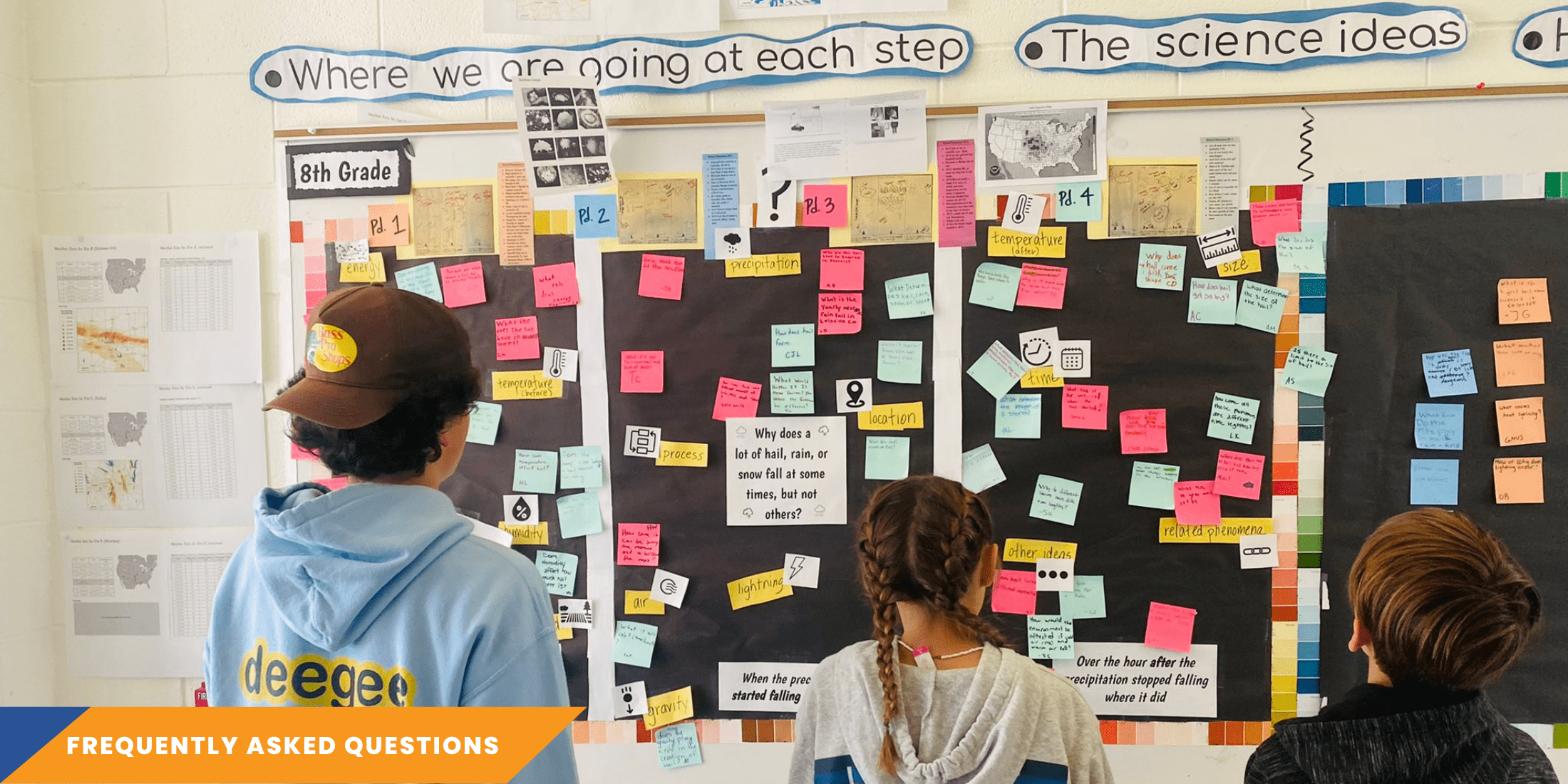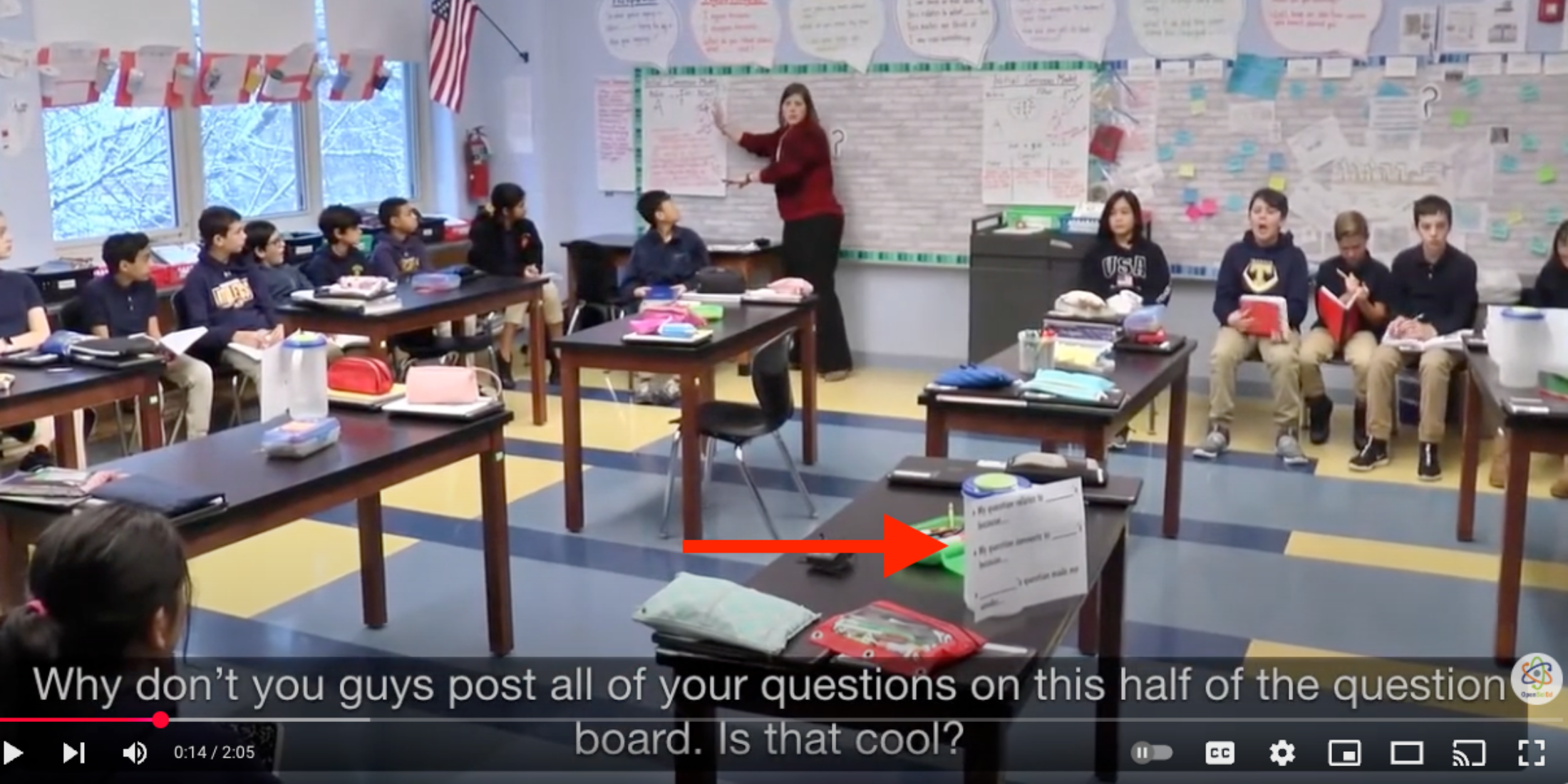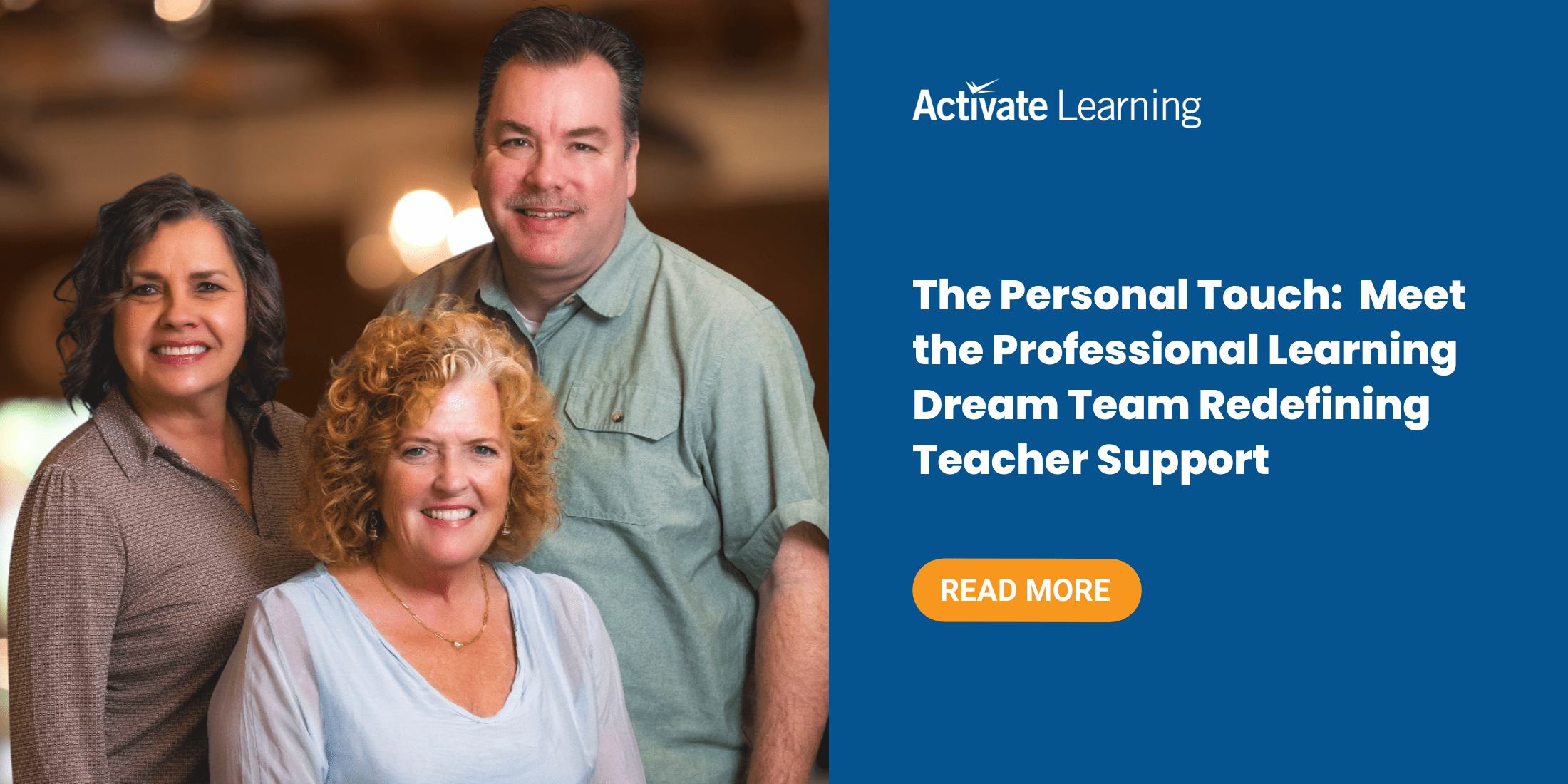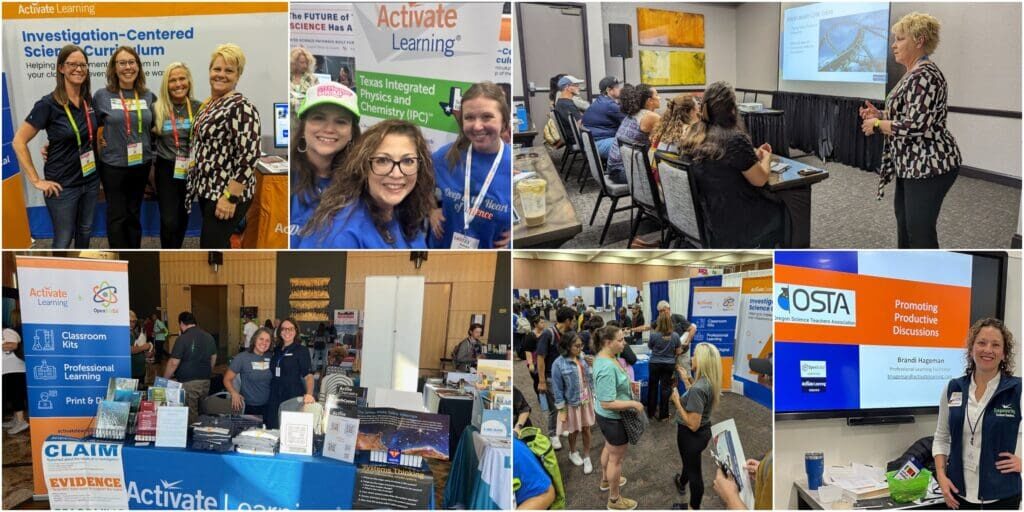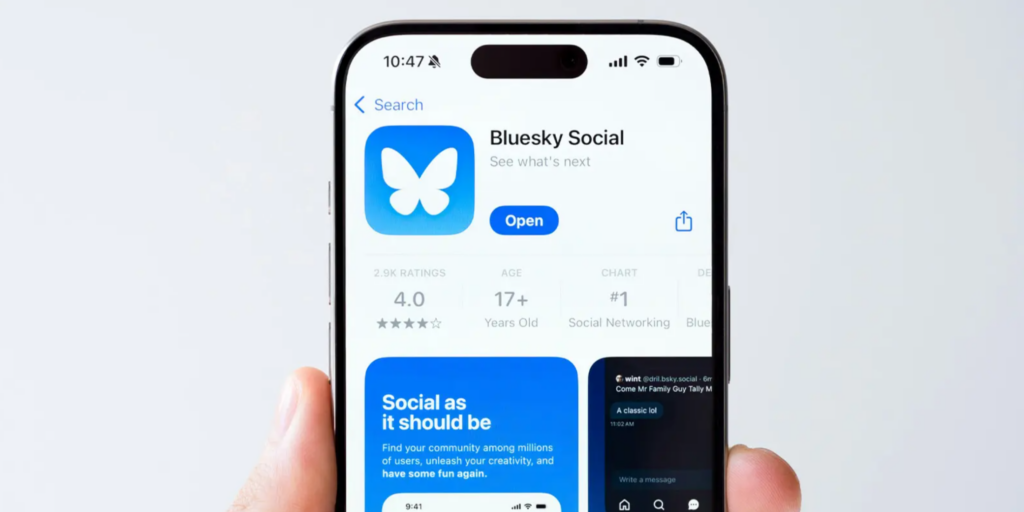Two Effective Strategies for Boosting Student Engagement During Driving Question Board Construction
Two Effective Strategies for Boosting Student Engagement During Driving Question Board Construction
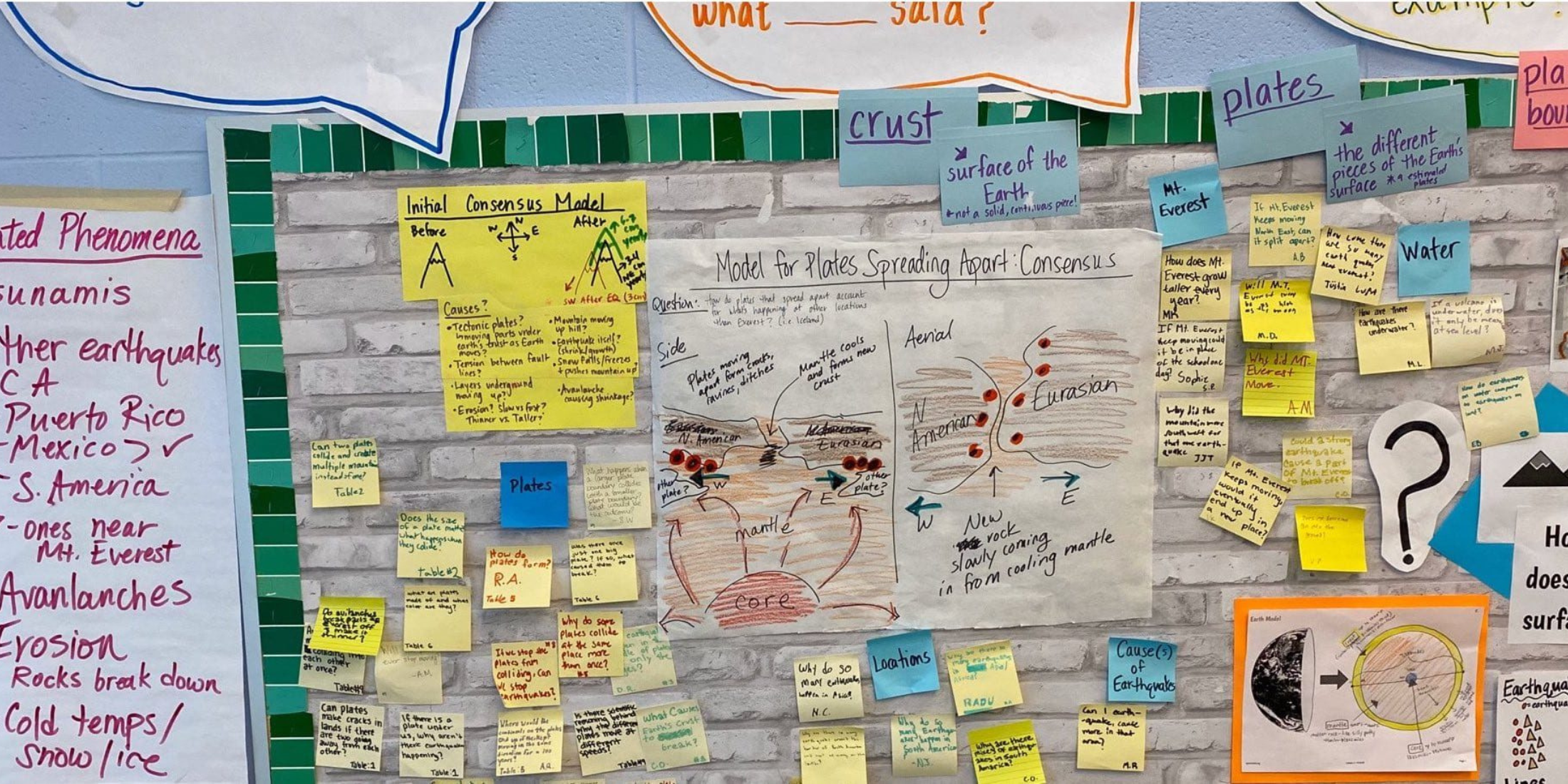
Quick Take: The Driving Question Board (DQB) is a tool used throughout the OpenSciEd units as a way to generate, keep track of, and revisit student questions related to the anchoring phenomenon and related phenomena. This guide provides educators with additional strategies to boost student engagement while constructing a Driving Question Board. This post expands on our previous post What’s a Driving Question Board and How Does It Shift Students from Learning Science to Actively DOING Science?
The OpenSciEd High School Teachers Handbook and the OpenSciEd on-demand professional learning page What's Driving Question Board? are referenced throughout the post so you can easily access additional resources. Let's dive in!
What is the Driving Question Board?
The Driving Question Board (DQB) is a tool used throughout the Open SciEd units as a way to generate, keep track of, and revisit student questions related to the anchoring phenomenon and related phenomena. Its use in OpenSciEd draws from work on project-based science learning, e.g., Singer, Marx, Krajcik, & Chambers (2000), Weizman, Shwartz, & Fortus (2010), and Nordine & Torres (2013). The Driving Question Board is a central support for the OpenSciEd Instructional Model. It is often paired with an “Ideas for Investigations” chart that surfaces students’ ideas for how they might investigate their questions on the DQB.
The DQB is a visual representation of the class’s shared mission of learning in the unit. The DQB is publicly displayed to serve as a learning resource for the community and should be easily accessible to students to see and add to during the unit. DQBs can be constructed with sticky notes or sentence strips; they can be written on whiteboards or with shared software applications (e.g., Padlet, Mural, Google Slides). Wherever and however they are constructed, it is essential that the board be available to all students throughout the unit. (OpenSciEd Teacher Handbook, page 22).
When is the DQB used?
A DQB is introduced at the beginning of each unit in the Anchoring Phenomenon routine, and then revisited by the class as part of the Navigation, Putting Pieces Together, and Problematizing routines. The role of a DQB changes over the course of a unit. Initially the DQB enables the teacher and students to understand what students both know and do not know about the anchoring phenomenon. As the class revisits the DQB, students begin to answer questions on the DQB and can pose new questions. (OpenSciEd Teacher Handbook, page 22).
How Does the DQB Enhance Student Engagement?
- Collective Learning Focus: The DQB shifts the focus from individual learning to a collective experience, where diverse ideas and questions contribute to the class's understanding. This communal approach encourages students to see the value in their peers' perspectives, fostering a sense of belonging and shared purpose.
- Valuing Diverse Ideas: By encouraging every student to contribute questions, the DQB promotes an appreciation for diverse thinking. This inclusivity broadens students' perceptions of who can contribute valuable insights in science, supporting a more equitable classroom environment.
- Ownership and Agency: As a visual representation of the class's shared learning mission, the DQB increases students' ownership and agency over their educational journey. Seeing their questions drive the investigations empowers students to take an active role in their learning. (On Demand Teacher Support, OpenSciEd)
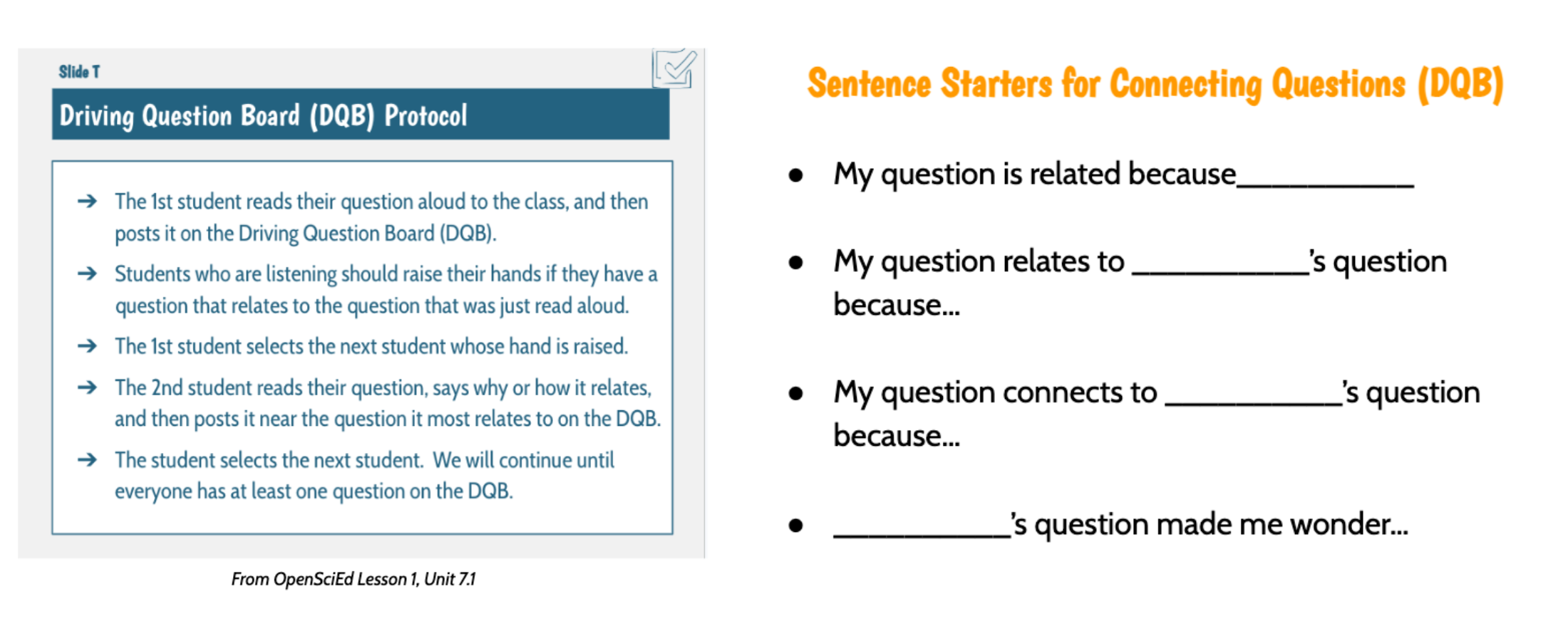
Boosting Student Engagement: Two Strategies for Success
During the anchoring phenomenon routine, teachers can enhance student engagement in several ways. Here are some strategies:
1. Using Sentence Starters for Related Questions
When engaging students using the Driving Question Protocol (see image of Slide T) provide a few sentences stems for students to use during step 4 “The 2nd student reads their question, says why or how it relates, and then posts it near the question it most relates toon the DQB.” The second student will read their question aloud, and then use one of the provided sentence stems to describe how or why their question is related to the previous question.
When students use these sentence starters to explain how or why their question connects to another student’s question, two key outcomes occur. First, the student has the chance to reflect and articulate their reasoning behind the connection. This process allows them to either confirm the relationship and confidently place their question alongside the related one on the DQB or reconsider and recognize that their question may not actually fit, prompting the need for a new category. Consistently using these sentence starters while developing the DQB makes it easier for the class to organize and establish meaningful question categories.
These sentence starters can be printed and placed in student notebooks for quick reference or placed strategically in the classroom for student use.
2. Incorporate Movement into the DQB Construction
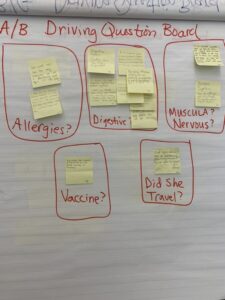
Another effective way to develop the DQB while increasing student engagement is by incorporating movement. In this OpenSciEd Curriculum Launch Video, students gather in a Scientists Circle with their questions prepared in their notebooks. The teacher sets up a table in the center of the circle with sticky notes and writing utensils, along with printed copies of the DQB Sentence Starters placed on multiple tables for easy reference.
As the DQB protocol begins, the first student shares their question with the class, then walks to the center table to write it on a sticky note. After sharing and explaining how or why their question is related, each student follows the same process—standing up, writing their question on a sticky note, and posting it on the DQB. This structured movement continues throughout the activity, ensuring every student has the opportunity to contribute while reinforcing connections between questions.
Ready to Get Started?
The Driving Question Board is more than just a classroom tool; it's a dynamic framework that places student inquiries at the heart of the learning experience. By implementing DQBs thoughtfully, educators can boost student engagement, promote equity, and cultivate a classroom culture where curiosity leads the way. Visit the OpenSciEd Driving Question Board landing page for additional resources, videos, and classroom examples of Driving Question Boards.
About the Author: Rebecca Garelli
Rebecca Garelli has been a professional educator for 19 years, focusing much of her career on teaching middle school math, science, and engineering in both Chicago and Phoenix. She has also been a science education consultant since 2009 and freelance science curriculum writer since 2015. Formerly, she was the Science & STEM Specialist for the Arizona Department of Education from 2019-2023, was a Lead Next Generation Science Standards (NGSS) Instructional Coach for the NGSS Collaborative in Chicago, and Adjunct Faculty member of DePaul University’s STEM Center where she taught graduate-level seminars on the NGSS.
Additionally, Rebecca currently writes NGSS curriculum and assessments for a variety of projects, provides professional learning nationwide as a full-time consultant, and is a member of the OpenSciEd National Facilitator Team. Rebecca is also currently serving a second 3-year term on the National Science Teaching Association (NSTA) Professional Learning in Science Education Committee. Rebecca is also a Professional Learning Facilitator for Activate Learning.
Rebecca earned a B.S. in Elementary Education from DePaul University, an M.Ed. in Science Education from Loyola University Chicago, is a Next Generation Science Exemplar (NGSX) Facilitator, and an Advanced Facilitator Credential from the Waters Center for Systems Thinking.
* * * * * * *

